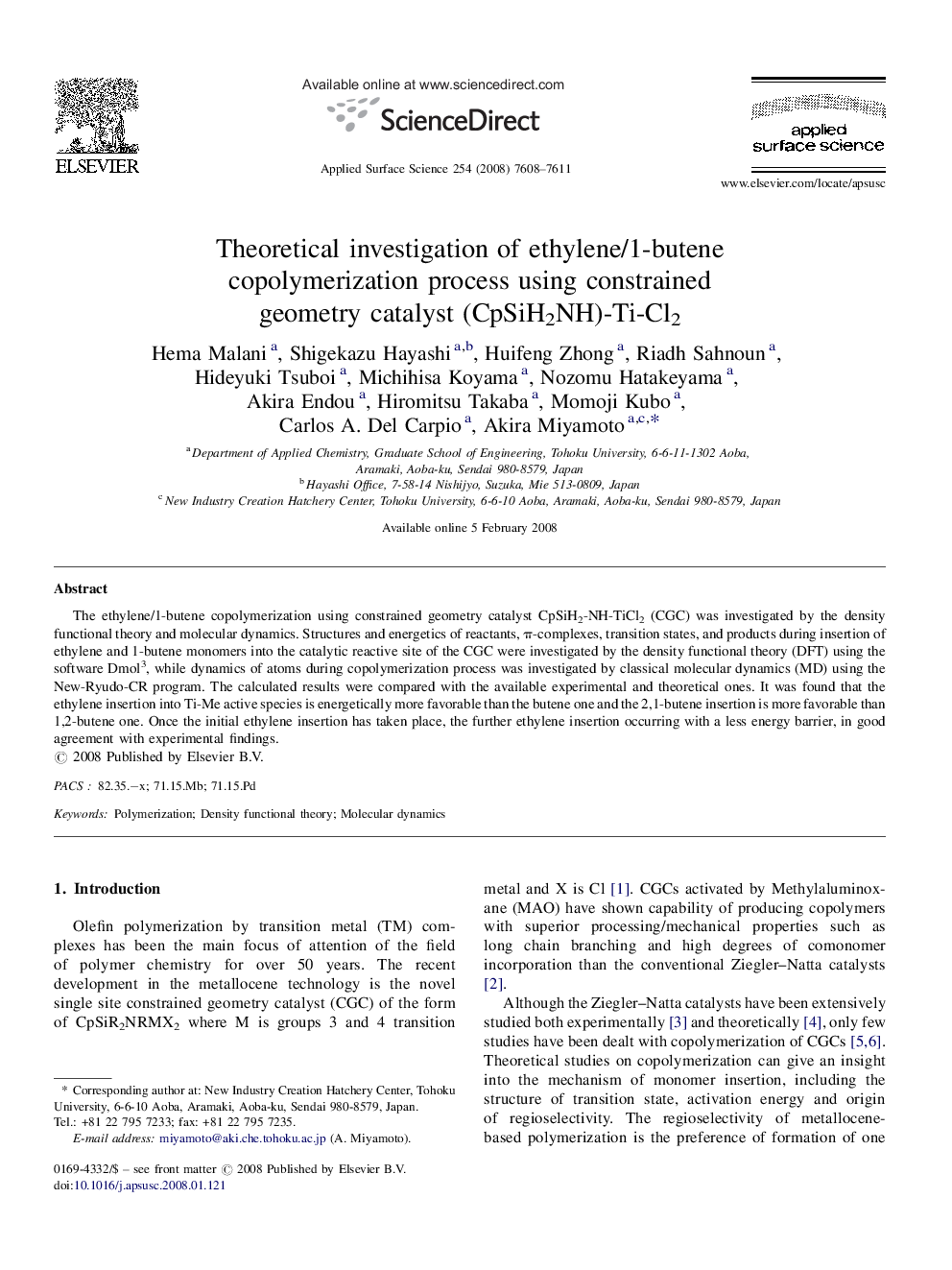| Article ID | Journal | Published Year | Pages | File Type |
|---|---|---|---|---|
| 5360728 | Applied Surface Science | 2008 | 4 Pages |
Abstract
The ethylene/1-butene copolymerization using constrained geometry catalyst CpSiH2-NH-TiCl2 (CGC) was investigated by the density functional theory and molecular dynamics. Structures and energetics of reactants, Ï-complexes, transition states, and products during insertion of ethylene and 1-butene monomers into the catalytic reactive site of the CGC were investigated by the density functional theory (DFT) using the software Dmol3, while dynamics of atoms during copolymerization process was investigated by classical molecular dynamics (MD) using the New-Ryudo-CR program. The calculated results were compared with the available experimental and theoretical ones. It was found that the ethylene insertion into Ti-Me active species is energetically more favorable than the butene one and the 2,1-butene insertion is more favorable than 1,2-butene one. Once the initial ethylene insertion has taken place, the further ethylene insertion occurring with a less energy barrier, in good agreement with experimental findings.
Related Topics
Physical Sciences and Engineering
Chemistry
Physical and Theoretical Chemistry
Authors
Hema Malani, Shigekazu Hayashi, Huifeng Zhong, Riadh Sahnoun, Hideyuki Tsuboi, Michihisa Koyama, Nozomu Hatakeyama, Akira Endou, Hiromitsu Takaba, Momoji Kubo, Carlos A. Del Carpio, Akira Miyamoto,
